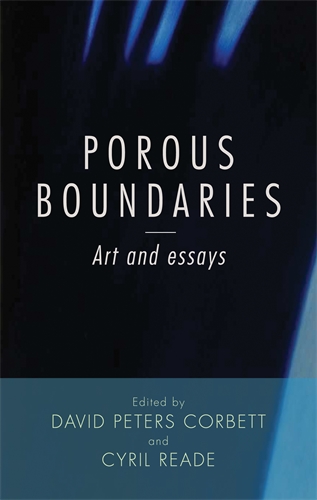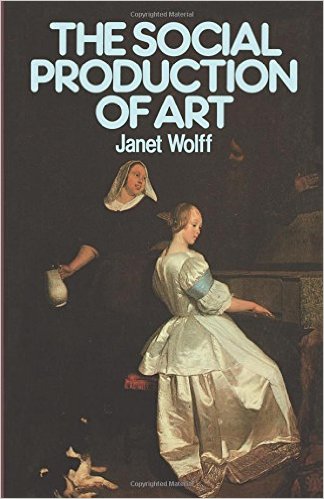 ADHT Professor Margot Bouman recently contributed an article to Porous Boundaries: Art and Essays, an anthology dedicated to the career of the notable feminist scholar Janet Wolff. The anthology, published by Manchester University Press in August 2015, includes essays, memoirs and artworks that consider Wolff’s important contributions to multiple fields. Read Bouman’s reflections on the project and her essay “New Blueprints for Knowledge Production” below!
ADHT Professor Margot Bouman recently contributed an article to Porous Boundaries: Art and Essays, an anthology dedicated to the career of the notable feminist scholar Janet Wolff. The anthology, published by Manchester University Press in August 2015, includes essays, memoirs and artworks that consider Wolff’s important contributions to multiple fields. Read Bouman’s reflections on the project and her essay “New Blueprints for Knowledge Production” below!
How and why did you become involved in Porous Boundaries?
Margot Bouman: In the mid-1990s I was a BFA major at Concordia University in Montreal, Canada. For the midterm exam in one of my classes, Feminism and Art History, we were asked to write an essay responding to a well-known feminist scholar. From the short list of assigned readings, I chose an article by Janet Wolff. A highly influential voice over several decades in the literature of sociology, cultural studies, visual studies and art history, as well as dance and modernism, Janet’s work has significantly contributed to the way we view issues as diverse as modernism, the flâneur, British and American art in the early twentieth century, and the gendered literature of modernity. In the 1990s I found her interdisciplinary approach to art to be utterly transformative.
Near the end of my undergraduate degree, I decided to continue my studies at the graduate level in order to more deeply investigate the connections between cultural production, critical theory and society that scholarship like Janet’s had established. I applied for and was accepted into the PhD program in Visual and Cultural Studies (VCS) at the University of Rochester in Rochester, NY. At the time, the VCS program was one of the few interdisciplinary doctoral degrees in North America. While I was in residence at Rochester, Janet served as the program’s director. Subsequently, she went on to take up appointments at Columbia University, and then the University of Manchester. After passing my qualifying exams I moved to New York City.
In addition to working with some really influential faculty, at Rochester I forged some enduring friendships with my fellow graduate students, which continue to enrich both my professional and my personal life. One such individual is Cyril Reade, an artist and a scholar who is currently Associate Professor of Art History and Director of the Rutgers-Camden Center for the Arts at Rutgers University. Following Janet’s retirement from the University of Manchester, Cyril, in collaboration with David Peters Corbett, conceived of a book that would be dedicated to Janet’s outsized influence on the fields she contributed to. Porous Boundaries: Art and Essays, as it came to be called, includes original artworks, memoirs and essays that are inspired by her example and deal with questions she has discussed. A number of Janet Wolff’s collaborators and others associated with the fields she has worked in contributed, including the sociologist Zygmunt Bauman, the artist Walid Ra’ad, and the feminist art historian Griselda Pollock. In my capacity as a former graduate student from a program that Janet had directed, Cyril invited me to contribute.
 As faculty, we teach, we work in our respective fields, and we serve the university. This service can take many forms. From 2011 to 2013, I served on the Parsons Committee for Undergraduate Education. As a member of this committee, I contributed to the shape of the liberal arts in the Parsons undergraduate curriculum. In 2013, together with Alice Crary (NSSR Philosophy) I developed a model for intercollege study across The New School through our graduate certificate in gender and sexuality studies. While working on these curricula, I didn’t consciously relate my service to Janet Wolff’s administrative record. Nevertheless when addressing questions regarding interdisciplinarity, or intercollege program structures — which happened often — I automatically fell back on elements of the visual and cultural studies program structure as a precedent to help me think through possible institutional models.
As faculty, we teach, we work in our respective fields, and we serve the university. This service can take many forms. From 2011 to 2013, I served on the Parsons Committee for Undergraduate Education. As a member of this committee, I contributed to the shape of the liberal arts in the Parsons undergraduate curriculum. In 2013, together with Alice Crary (NSSR Philosophy) I developed a model for intercollege study across The New School through our graduate certificate in gender and sexuality studies. While working on these curricula, I didn’t consciously relate my service to Janet Wolff’s administrative record. Nevertheless when addressing questions regarding interdisciplinarity, or intercollege program structures — which happened often — I automatically fell back on elements of the visual and cultural studies program structure as a precedent to help me think through possible institutional models.
With these experiences in mind, I wrote an article for Porous Boundaries on the interdisciplinary ambitions of the Parsons undergraduate review and implementation, and its relationship to the broader landscape of interdisciplinary programs, degrees and certificates in the United States, Canada, the United Kingdom, Australia and elsewhere. In my research for this article, I learned that Janet’s experience with interdisciplinary and interdepartmental initiatives both predated and followed her time in Rochester, when I knew her best. During her fifteen years at the University of Leeds in the United Kingdom, she established an MA in the Sociology of Culture with the art historian T. J. Clark; an undergraduate degree in sociology and art history in the late 1970s; and, with Griselda Pollock and others, in the early 1980s founded an interdisciplinary Centre for Cultural Studies. In other words, while I have known about the importance of Janet’s scholarship since I was a BFA student in Montreal, from my perspective as a faculty at The New School I now see her role in administration and program development to be equally instrumental to the broader advancement of interdisciplinary scholarship.
To obtain a copy of Porous Boundaries, click here!
Margot Bouman is Assistant Professor of Visual Culture. She is at work on two book projects. The first, Cut, Shift, Paste: Sampling and the Site Specific in Contemporary Art will address the conceptually, materially and aesthetically distinct outcomes works of art that are simultaneously anchored in their site and their sample’s referent produce. It is under contract with I.B.Tauris. The second book project, “From Television’s Avant-Garde to the Televisual and the Avant-Garde: 1968-1988” is a historical examination of the unintended consequences resulting from avant-gardist incursions into television across two decades. It theorizes the interrelationship between television, televisuality, modernist and postmodernist art, as well as broader claims for postmodernism. Her article on Christian Marclay’s The Clock (2014) was recently translated into Portuguese and published in Laika: http://www.revistalaika.org/no-0 .


























